The fallout from last week’s abrupt decision by President Trump to withdraw U.S. troops from northeast Syria and the Turkish invasion that followed has been predictable: from abandoning the Syrian Defense Forces (SDF) to allowing hundreds of terrorist prisoners to escape to emboldening Iran, Russia, and the Islamic State.
Most of the focus has been on the significant near-term, security, and geopolitical implications of Trump’s latest — and perhaps most consequential — foreign policy decision by tweet. One consequence that has received considerably less attention, perhaps because it may not pose as great a short-term threat, but in the end may prove to have the longest-lasting impact, concerns what will happen to the thousands of children linked to captured Islamic State fighters being held in the al-Hol camp and other SDF-controlled detention camps.
Facts on the ground
The overcrowded camp included over 40,000 children, 75% under 12 years of age, and 11,000 non-Syrian and non-Iraqis. According to the International Committee of the Red Cross, “their parents were either killed or wounded and they are today in a place which is really not made for kids. So you can imagine the trauma those kids have suffered, are still suffering.” They present unique needs. For example, as a recent European Parliament report underscored, they “may have had their normal social, moral, and emotional development interrupted by the experience of war.” They may have been exposed to, been victims of violence, and/or committed violent acts, making the likelihood and severity of trauma particularly acute as compared to their parents or other adults.
ISIS supporters were already recruiting and radicalizing within this and other camps before the SDF forces guarding the facility shifted their limited resources to defend the Syrian-Turkish border. This has left this and other ISIS detention facilities and encampments “with little to no security” according to General Joseph Votel and Elizabeth Dent, and the United States is indicating that Turkey now bears responsibility for the detainees.
This, along with the continued refusal of a number of countries, including in Europe, to signal a willingness to take back their citizens, all but assures that the most vulnerable among them — the children — will not only continue to have their urgent emotional, developmental, health, and education needs left unmet, but potentially exacerbated by the additional trauma they are likely to experience as a result of the U.S. withdrawal.
The abandonment of the children in al-Hol has only exacerbated an already bleak situation. Apart from the obvious humanitarian, mental health, and public health concerns this raises, the long-term security risks of failing to meet their needs could be significant — in the Middle East, the West, or elsewhere. This is particularly true given that some, though by no means all, who have been victimized could go on to choose violent action.
Best practices
Much ink has already been spilled about what to do with the children of ISIS fighters, many of whom were born in the conflict zone, recognizing their unique risks and needs. In fact, there is no shortage of principles, recommendations, and best practices in this area, many developed by multilateral bodies whose membership includes those same governments that remain reluctant to reclaim or otherwise support their young, detained citizens.
Responses should be informed by an understanding of the rights and best interests of the child. Children should be treated primarily as victims, and trying to live a “normal” life should be a top priority. Rehabilitation, reintegration, and preventing further stigmatization should be prioritized. Assessments of a child’s risks and needs, and decisions on whether to recommend some form of rehabilitation program, custody, and/or supervision, should balance the need to take into account the best interests of the child with the need to ensure public safety.
Mental health professionals with training in trauma and experience working with children, and well as behavioral and other pediatricians (given the range of developmental issues that could present), should be involved in carrying out assessments and in determining appropriate interventions. Rehabilitation and reintegration programs for children should be holistic and include social, educational (including pre- and/or primary schools, where necessary), mentoring, and mental health components, including for parents, grandparents, and other relevant family and community members. Sensitizing and providing training for teachers who may be asked to integrate returnee children in their classrooms is critical too, as is engaging with and otherwise preparing communities to receive returnee children (and their families). Trauma-healing should be a priority and thus trauma-sensitization training for those who may come in direct contact with the children on a regular basis may be appropriate.
Although the principles, practices, and policies that should guide child-focused rehabilitation and reintegration efforts are relatively straightforward — with the U.N. Office of Counter-Terrorism being the latest multilateral actor to have published guidance in this area — the obstacles to implementing them can be considerable. For starters, there is the challenge of convincing far too often skeptical politicians and publics that ignoring the problem in the short term, including by refusing to accept the return of their young citizens, will only make things worse in the long term. Second, there are the often significant technical and capacity challenges. For example, a range of practitioners and professionals will likely need to be involved, from teachers to social protection workers to mental health professionals to community-based and other civil society organizations that work with young people to behavioral pediatricians. Many of them will require specialized training and skills and lack experience working on cases with potentially significant security implications. More fundamentally, some countries lack the institutional capacities, whether in the mental or wider public-health or social-protection sector, to adequately service the existing population — let alone to support the delivery of more specialized interventions with young people who may have some association with terrorist violence.
Kazakhstan and Kosovo are among the small number of countries that have taken back their citizens from what was, until last week, SDF-held territory in northeast Syria and have developed tailored programs to identify and address the often unique needs of the young returnees. Kosovo, for example, has initiated a rehabilitation and reintegration program to service women and children in their homes, and Kazakhstan has launched a center dedicated to this issue. Although it’s far too early to tell if these initiatives will be effective, they will soon be able to offer lessons learned for other countries that may decide to step forward. Both countries have benefited from ad hoc training on how to identify and address post-traumatic stress and other mental health-related issues that are likely to manifest among young returnees.
Preventing a return to victimization or violence
Although not a panacea, a global effort involving governments and the private sector to mobilize resources and expertise to develop tailored programs that address the risks and needs of these children is long overdue. First, countries that have shown a willingness to allow their young citizens to return home, but lack the necessary capacities to integrate returnees effectively, must be supported. Second, it must be demonstrated to skeptical politicians and publics that there is a way to balance the need to support the return and rehabilitation of their young citizens with the need to protect public safety.
The obstacles to mounting a global effort are formidable. One, it calls for organizing and funding a roster of experts who would design and deliver training to countries to help them prepare for returnee children. Here, the Global Community Engagement and Resilience Fund, the world’s only global fund dedicated to supporting locally-led programs to prevent violent extremism and one that is developing a strong track record of working with young people, could seek to mobilize resources from governments and the private sector to support such efforts. Two, it calls for multi-disciplinary and multi-sector approaches, involving mental health, public health, national security, education, which is reminiscent of the U.N.’s definition of human security. Three, it calls for leadership and/or sponsorship from governments that have thus far not been willing to shoulder their responsibility in this space. Given President Trump’s recent Syria decision and the divide within Europe on the issue, it’s not clear which countries might be prepared to step forward to lead the charge.
What is the cost of doing nothing? The children of al-Hol, rather than being rescued and on a path towards recovery, rehabilitation, and reintegration, will either be killed, victimized again, or recruited by ISIS or another terrorist group, where some of them could make for good future terrorists.
Just as we failed to imagine and prepare for the rise of ISIS, we too will pay for failing to address the human security needs of these child victims. The time to act is passing us by.

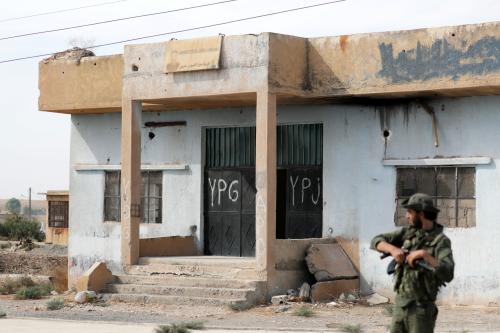
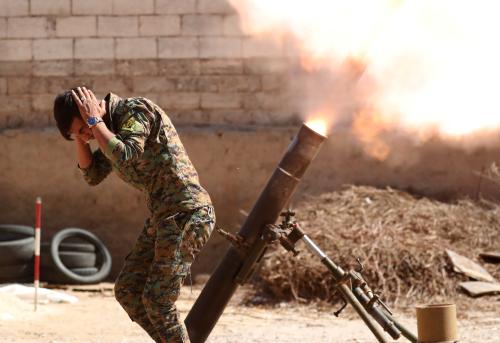
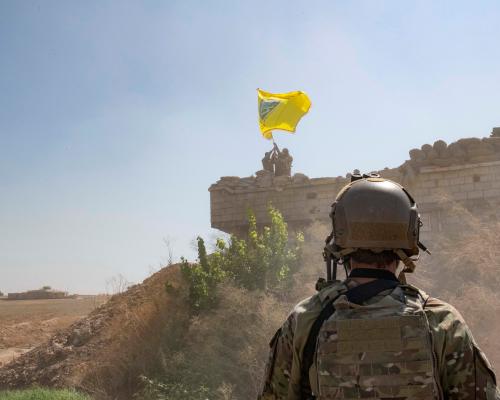

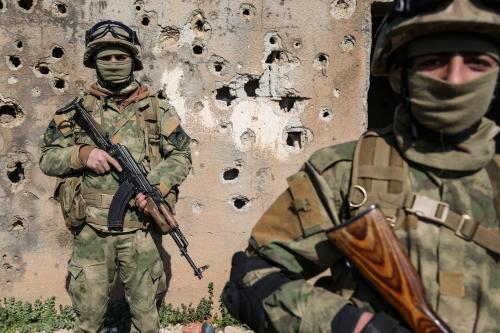
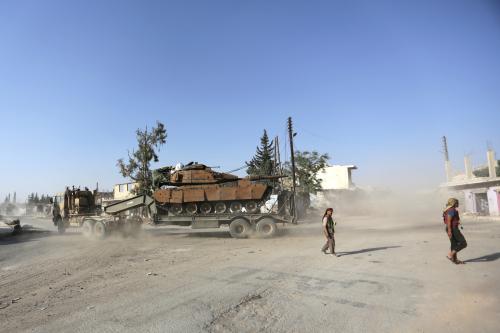
Commentary
The fallout from President Trump’s Syria withdrawal: Don’t forget the children
October 16, 2019